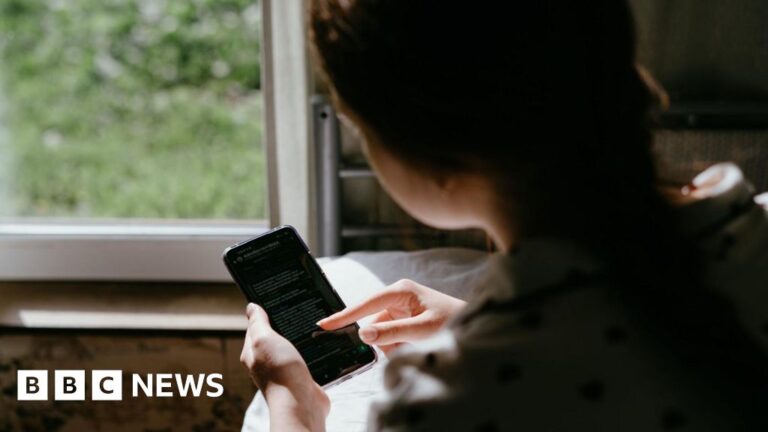
Sweco reports 12% EBITA beat in Q3 with strong margin expansion
Sweco’s Q3 EBITA exceeds expectations with 12% growth and increased margins
Israeli airstrikes result in the deaths of 33 in Gaza, according to first responders, despite Trump’s insistence that ceasefire is still in place.
David Gritten,Jerusalem and
Rushdi Abualouf,Gaza correspondent, in Istanbul
At least 33 Palestinians were killed in a wave of Israeli strikes in Gaza on Tuesday night, the Hamas-run Civil Defence agency and hospitals say.
Israel carried out the strikes in response to what it said were violations by Hamas of the US-brokered ceasefire deal.
Israel’s defence minister accused Hamas of an attack in southern Gaza that killed an Israeli soldier on Tuesday, and of breaching the terms on returning deceased hostages’ bodies. Hamas claimed it had “no connection” to the attack and insisted it was committed to the ceasefire deal.
US President Donald Trump maintained “nothing” would jeopardise the ceasefire, but added that Israel should “hit back” when its soldiers were targeted.
 Anadolu via Getty Images
Anadolu via Getty ImagesThe Israeli strikes hit homes, schools and residential blocks in Gaza City and Beit Lahia in the north of Gaza, Bureij and Nuseirat in the centre, and Khan Younis in the south, according to witnesses and first responders.
In Gaza City, witnesses described seeing “pillars of fire and smoke” rising into the air as explosions shook several residential areas.
A Civil Defence spokesman told the BBC early on Wednesday that 14 people were killed across the city, including three women and a man who were pulled from the rubble of the al-Banna family’s home in the southern Sabra neighbourhood.
In the urban Bureij refugee camp, five members of the Abu Sharar family were killed in a strike on their home in the Block 7 area, he said.
And in Khan Younis, another five people were killed when aircraft targeted a vehicle on a road north-west of the city, he added.
The Civil Defence spokesman said its rescue teams were “working amid extremely difficult conditions” and that he feared the death toll would rise because some missing people were believed to trapped under rubble.
A brief statement put out by Israeli Prime Minister Benjamin Netanyahu’s office on Tuesday evening said he had ordered the military to carry out “forceful strikes” in Gaza but did not specify his reasons.
However, his defence minister said Hamas had crossed “a bright red line” by launching an attack on Israeli soldiers in Gaza on Tuesday.
“Hamas will pay many times over for attacking the soldiers and for violating the agreement to return the fallen hostages,” Katz warned.
An Israeli military official said the attack took place “east of the Yellow Line”, which demarcates Israeli-controlled territory inside Gaza under the ceasefire deal.
On Wednesday morning, the Israeli military announced a reservist soldier, Master Sergeant Yona Efraim Feldbaum, was killed.
Israeli media said he was part of a military engineering team that was operating in the southern city of Rafah when it was ambushed.
Gunmen reportedly emerged from an underground tunnel system and opened fire at the soldiers, including with rocket-propelled grenades.
Hamas issued a statement denying that its fighters had attacked Israeli troops and condemning the Israeli strikes.
“Hamas affirms that it has no connection to the shooting incident in Rafah and affirms its commitment to the ceasefire agreement,” it said.
“The criminal bombardment carried out by the fascist occupation [Israeli] army on areas of the Gaza Strip represents a blatant violation of the ceasefire agreement.”
The group’s military wing meanwhile said it would postpone the return of a hostage’s body it had recovered on Tuesday due to what it called Israeli “violations”.
The US played down concerns that all-out hostilities could resume.
On board Air Force One, President Trump told reporters: “As I understand it, they took out, they killed an Israeli soldier. So the Israelis hit back and they should hit back.”
“Nothing is going to jeopardise” the ceasefire, he said. “You have to understand Hamas is a very small part of peace in the Middle East, and they have to behave.”
Vice-President JD Vance earlier said that the ceasefire was “holding” despite what he described as “little skirmishes” between the two sides.
 Anadolu via Getty Images
Anadolu via Getty ImagesOn Tuesday afternoon, Israel’s prime minister had pledged to take unspecified “steps” against Hamas after the group handed over the previous day a coffin containing human remains that did not belong to one of the 13 deceased hostages still in Gaza.
Netanyahu’s office said forensic tests showed they belonged to Ofir Tzarfati, an Israeli hostage whose body was recovered by Israeli forces in Gaza in late 2023, and that this constituted a “clear violation” of the ceasefire deal.
The Israeli military also released footage from a drone that it said showed Hamas operatives “removing body remains from a structure that had been prepared in advance and burying them nearby” in eastern Gaza City on Monday.
“Shortly afterwards,” it added, the operatives “summoned representatives of the Red Cross and staged a false display of discovering a deceased hostage’s body.”
Hamas rejected what it called the “baseless allegations” and accused Israel of “seeking to fabricate false pretexts in preparation for taking new aggressive steps”.
The International Committee of the Red Cross (ICRC) later condemned what it called the “fake recovery”, saying it had attended the scene “at the request of Hamas” and “in good faith”.
It went on: “The ICRC team at this location were not aware that a deceased person had been placed there prior to their arrival, as seen in the footage – in general, our role as neutral intermediary does not include unearthing of the bodies of the deceased.
“Our team only observed what appeared to be the recovery of remains without prior knowledge of the circumstances leading up to it.
“It is unacceptable that a fake recovery was staged, when so much depends on this agreement being upheld and when so many families are still anxiously awaiting news of their loved ones.”
 Reuters
ReutersThe ceasefire agreement brokered by the US, Egypt, Qatar and Turkey is supposed to implement the first stage of Trump’s 20-point Gaza peace plan.
It said Hamas would return its 48 living and deceased hostages within 72 hours of the ceasefire taking effect on 10 October.
All 20 living Israeli hostages were released on 13 October in exchange for 250 Palestinian prisoners and 1,718 detainees from Gaza.
Israel has also handed over the bodies of 195 Palestinians in exchange for the bodies of the 13 Israeli hostages so far returned by Hamas, along with those of two foreign hostages – one of them Thai and the other Nepalese.
Eleven of the dead hostages still in Gaza are Israelis, one is Tanzanian, and one is Thai.
On Saturday, Hamas’s chief negotiator Khalil al-Hayya said the group was facing challenges because Israeli forces had “altered the terrain of Gaza”. He also said that “some of those who buried the bodies have been martyred or no longer remember where they buried them”.
However, the Israeli government insists Hamas knows the locations of all the bodies.
All but one of the dead hostages still in Gaza were among the 251 people abducted during the Hamas-led attack on southern Israel on 7 October 2023, during which about 1,200 other people were killed.
Israel responded by launching a military campaign in Gaza, during which more than 68,530 people have been killed, according to the territory’s Hamas-run health ministry.
Impact of Saudi Tariffs on Global Energy Transition and Human Welfare
The global energy transition continues to press forward, but tariff wars and the rising politicization of renewable power is hurting the growth of clean, accessible electricity worldwide, said the founder and chairman of Saudi Arabia’s ACWA Power.
Speaking at the Fortune Global Forum in Riyadh, ACWA chairman Mohammad Abunayyan and others discussed the global need of relying on the right mix of solar, wind, and battery-storage power, as well as fossil fuels and nuclear power to produce enough electricity for people in every part of the world to have the most secure, clean, and affordable energy, especially as renewables increasingly become more cost-competitive.
But Abunayyan cautioned against the “great disturbance” of rising trade barriers—without specifically mentioning the trade wars initiated by U.S. President Donald Trump—and he praised China for leading the world in the energy transition. He said politicians should remove themselves more from energy politics. It’s harmful when world leaders say green energy or wind power is “not good,” he said, again not naming Trump and his attacks on wind and other renewables.
“These barriers with imports, exports, all of these issues, they are making it more complicated for the world. They are making it very expensive for everybody. We are just creating barriers unnecessarily for no reason. The whole globe needs each other,” Abunayyan said. “There’s no one country that does not need the others. We are all human on this earth. We need to work together, we need to have integration, and we need to think about how we create something that’s good for all our people on this earth.”
Apart from being a leading renewables developer, ACWA also is building the world’s largest green hydrogen project in Saudi Arabia to produce ammonia, the NEOM Green Hydrogen Project, which is slated for completion in 2027.
ACWA, which is 50% owned by the Saudi sovereign wealth fund, has grown into one of the largest renewable energy and water desalination players in the world, developing projects in Saudi Arabia and throughout Asia and Africa, including China. The China Southern Power Grid owns a major stake in some of ACWA’s Asian wind subsidiaries.
Abunayyan also praised “Chinese innovation” for leading the energy transition, especially with China controlling the largest supply chains for wind turbines, solar panels, and battery components. “If there is no China, there is no energy transition,” he said. “We have to give full credit to China innovation, scale, competitiveness, and giving solutions to the world [so] that they will be able to go into an energy transition.”
Likewise, Abu Dhabi–based Masdar is helping the United Arab Emirates and other Middle Eastern countries transition to renewables for domestic power, even as they remain major global oil exporters.
Striking the right balance
Masdar CEO Mohamed Jameel Al Ramahi said the UAE aims to have 50% of its electricity generated by renewables by 2030. One key component is Masdar’s “round-the-clock,” one-gigawatt renewable project that broke ground in Abu Dhabi in October. The project is a combination of solar power and battery storage—coupled with AI software management—that will provide power 99% of the time, he said, and eliminates the intermittency problems cited by renewable energy critics.
“We can now control the power of the sun. We store during the day, and we generate during the day, and then we dispatch during the night,” Al Ramahi said. “This could be a blueprint and replicated elsewhere.”
The CEO of France-based, multinational utility giant Engie agreed about the need to embrace both renewables and energy diversification.
Engie is investing in renewables more than any other power source, CEO Catherine MacGregor said, but that doesn’t mean only building solar farms in every corner of the world. Doing so would lead to an unreliable, inefficient energy grid.
“It’s not going to be one technology saving the world,” she said. “It’s the very smart integration, technology-based smart grid that is going to be the solution on the power side.”
Still, it’s critical to focus on making new electricity generation as green as possible—whether it’s new demand or replacing old assets—while leaning into whatever low-carbon generation sources make the most sense for every geography or nation.
“We are more confident than ever that we’re pointing in the right direction, with the caveat that the projects have to be good projects,” MacGregor said. “You need to provide the right electrons at the right times. The electricity that you produce has to have the right profile that customers need.”
Few anticipate a decrease in heated US-China rivalry as Trump and Xi approach deal | International Trade News
Gyeongju, South Korea – As US President Donald Trump and Chinese leader Xi Jinping prepare to meet for the first time since 2019, Washington and Beijing appear poised to reach a deal to lower the temperature of their fierce rivalry.
But while Trump and Xi are widely expected to de-escalate US-China tensions in South Korea on Thursday, expectations are modest for how far any agreement will go to resolve the myriad points of contention between the world’s two largest economies.
Recommended Stories
list of 4 itemsend of list
Many details of the expected deal that have been flagged in advance relate to avoiding future escalation, rather than rolling back the trade war that Trump launched during his first term and has dramatically expanded since returning to office this year.
Some of the proposed measures involve issues that have only arisen within the last few weeks, including China’s plan to impose strict export controls on rare earths from December 1.
Whatever Trump and Xi agree to on the sidelines of the Asia-Pacific Economic Cooperation (APEC) summit in Gyeongju, there is little doubt that Washington and Beijing will continue to butt heads as they jockey for influence in a rapidly shifting international order, according to analysts.
“I have modest expectations for this meeting,” said Deborah Elms, head of trade policy at the Hinrich Foundation in Singapore.
“I think, no matter what happens this week, we haven’t seen the end of economic tensions, tariff threats, export controls and restrictions, and the use of unusual levers like digital rules,” Elms told Al Jazeera.
Contours of a deal
While the exact parameters of any deal are still to be determined by Trump and Xi, the contours of an agreement have emerged in recent days.
US Secretary of the Treasury Scott Bessent said in media interviews this week that he expected China to defer its restrictions on rare earths and that Trump’s threatened 100 percent tariff on Chinese goods was “effectively off the table”.
Bessent said he also anticipated that the Chinese side would agree to increase purchases of US-grown soya beans, enhance cooperation with the US to halt the flow of chemicals used to manufacture fentanyl, and sign off on a finalised TikTok deal.
While heading off a further spiralling in US-China ties, a deal along these lines would leave intact a wide array of tariffs, sanctions and export controls that hinder trade and business between the sides.
Since Washington and Beijing reached a partial truce in their tit-for-tat tariff salvoes in May, the average US duty on Chinese goods has stood at more than 55 percent, while China’s average levy on US products has hovered at about 32 percent.
Washington has blacklisted hundreds of Chinese firms deemed to pose national security risks, and prohibited the export of advanced chips and key manufacturing equipment related to AI.
China has, in turn, added dozens of US companies to its “unreliable entity” list, launched antitrust investigations into Nvidia and Qualcomm, and restricted exports of more than a dozen rare earths and metallic elements, including gallium and dysprosium.
US-China trade has declined sharply since Trump re-entered the White House.
China’s exports to the US fell 27 percent in September, the sixth straight month of decline, even as outbound shipments rose overall amid expanding trade with Southeast Asia, Latin America, Europe and Africa.
China’s imports of US goods declined 16 percent, continuing a downward trend since April.
“The structural contradictions between China and the United States have not been resolved,” said Wang Wen, dean of the Chongyang Institute for Financial Studies at Renmin University of China in Beijing, predicting continuing friction and “even worse” relations between the superpowers in the future.
“Most importantly, China’s strength is increasing and will surpass that of the United States in the future,” Wang told Al Jazeera.
‘De-escalation unlikely’
Shan Guo, a partner with Shanghai-based Hutong Research, said he expects the “bulk” of the deal between Trump and Xi to be about avoiding escalation. “A fundamental de-escalation is unlikely given the political environment in the US,” Guo told Al Jazeera.

But with the US having no alternative to Chinese rare earths and minerals in the near-term, Washington and Beijing could put aside their differences for longer than past trade truces, Guo said.
“This means reduced downside risks in US-China relations for at least a year, or perhaps even longer,” he said.
Dennis Wilder, a professor at Georgetown University who worked on China at the CIA and the White House’s National Security Council, said that while he is optimistic the summit will produce “positive tactical results”, it will not mark the end of the trade war.
“A comprehensive trade deal is still not available,” Wilder told Al Jazeera.
“Bessent and his Chinese counterpart will continue negotiating in hopes of a more lasting agreement if and when President Trump visits China next year.”
Trump and Xi’s go-to language on the US-China relationship itself points to the gulf between the sides.
While Trump often complains about the US being “ripped off” by China, Xi has repeatedly called for their relations to be defined by “mutual respect” and “win-win cooperation”.
“The United States should treat China in a way that China considers respectful,” said Wang of Renmin University.
“They have to respect China, and if they don’t, then the United States will receive an equal response until they become able to respect others,” he added.
Harvard Women Start Class of 2027 with Verbal Commitment from US Open Qualifier Grace McCarthy
By Anne Lepesant on SwimSwam

Fitter and Faster Swim Camps is the proud sponsor of SwimSwam’s College Recruiting Channel and all commitment news. For many, swimming in college is a lifelong dream that is pursued with dedication and determination. Fitter and Faster is proud to honor these athletes and those who supported them on their journey.
Grace McCarthy from Cornelius, North Carolina, has announced her verbal commitment to the admission process* at Harvard University for the 2027-29 school year. She confirmed in writing to SwimSwam:
“I am incredibly honored and excited to announce my verbal commitment to the admissions process at Harvard University! I could not be more grateful for my family, friends, teammates, coaches and teachers who have pushed me to be my best self and supported me endlessly. A special thank you to Coach Chuck, Coach Ben, Coach Julio, Coach Brian, and Coach Larry. I couldn’t have done it without your guidance and belief in me. Lastly, I’d like to thank Coach Amanda and Coach Geordie for the opportunity to join their amazing team. This is a dream come true, GO CRIMSON
”
McCarthy is a junior at Pine Lake Preparatory. She swims year-round with SwimMAC Carolina and specializes in breast, free, and IM. As a freshman at the 2024 North Carolina High School 1A/2A State Championships, she contributed to Pine Lake’s team title with runner-up finishes in the 200 IM (2:05.49) and 100 free (51.38), notching PBs in both events. Last year, she was 3rd in the 100 free (53.45) and 5th in the 200 free (1:56.67).
In club swimming, she competed at Winter Juniors East in the 50 free, 100 free, and 100 breast. She earned lifetime best in the 50/100 free (23.53/50.71) while leading off SwimMAC’s relays. Earlier in the fall, she had clocked PBs in the 200 free (1:50.80), 100 breast (1:04.02), 200 breast (2:21.06), and 200 IM (2:03.88).
In long-course season, McCarthy threw down PBs in the 100 free (58.24), 200 free (2:07.44), 50 breast (34.55), 100 breast (1:14.93), and 200 breast (2:48.90). She wrapped up the summer at Junior Nationals in Irvine, where she competed individually in the 50 free (27.21) and 50 breast (PB of 34.55) and contributed to SwimMAC’s 200 free (27.13 leadoff) and 400 free (57.57 split) relays.
McCarthy’s best times would have scored points for the Crimson at the 2025 Ivy League Women’s Championships in the ‘B’ final of the 100 free and the ‘C’ finals of the 200 free and 100/200 breast. It took 23.45 in the 50 free and 2:03.15 in the 200 IM to make it back to finals at the conference meet.
Best SCY times:
- 50 free – 23.53
- 100 free – 50.71
- 200 free – 1:50.80
- 200 IM – 2:03.88
- 50 breast – 33.63
- 100 breast – 1:04.02
- 200 breast – 2:21.06
*Note: A verbal commitment between an Ivy League coach and a prospective student-athlete is not an offer of admission, as only the Admission Office has that authority. The coach can only commit his or her support in the admission process. Ivy League Admission Offices do not issue “Likely Letters” before October 1 of the prospective student-athlete’s senior year of high school. The Likely Letter, while issued after an initial read of the student’s application, is not an offer of admission to the university.
If you have a commitment to report, please send an email with a photo (landscape, or horizontal, looks best) and a quote to Recruits@swimswam.com.
About the Fitter and Faster Swim Tour
Fitter & Faster Swim Camps feature the most innovative teaching platforms for competitive swimmers of all levels. Camps are produced year-round throughout the USA and Canada. All camps are led by elite swimmers and coaches. Visit fitterandfaster.com to find or request a swim camp near you.
FFT SOCIAL
Instagram – @fitterandfasterswimtour
Facebook – @fitterandfastertour
Twitter – @fitterandfaster
FFT is a SwimSwam partner.
Read the full story on SwimSwam: Harvard Women Kick Off Class of 2027 With Verbal From US Open Qualifier Grace McCarthy
An Improved Method for Keeping in Touch While Traveling
When you’re traveling, staying connected is essential. Whether you’re figuring out the best route to your hostel, finding a place to eat, or translating a train schedule or menu, having reliable data makes life on the road infinitely easier. I still remember my early days of travel carrying a physical guidebook around as I wandered the streets looking for my accommodation.
Or, when smartphones became widespread, searching for a SIM card kiosk to buy a physical SIM, trying to poorly communicate with staff in a language I didn’t know, and spending 20 minutes swapping out tiny plastic chips.
Luckily, things have changed and life is incredibly easier thanks to eSIMs. Rather than needing a physical SIM card, you can download an app that gives you tons of high-speed data. In a world where we need to be connected for so many reasons (for example, everything in China is paid through an app, so you need data), eSIMs are great.
One company that’s become a major player in this space is Holafly. They offer unlimited data, quick setup, and global coverage without the hassle of finding a physical SIM card.
In a world of seemingly never ending eSIM companies, they are one of the best. In this blog post, I will tell you why!
Who is Holafly?


Holafly is a Spanish-founded company that started back in 2017 and is now based in Dublin. They offer eSIMs that you can install on your phone via QR code. Once activated, they let you connect to the internet abroad using local carrier networks. What sets Holafly apart from a lot of other providers is that over 200of their plans come with unlimited data and are priced by days rather than gigabytes. You can personalize the days from 1 up to 90 days in over 200 destinations. Holafly’s coverage is also pretty extensive. They offer service in over 200 destinations, which includes most of Europe, Asia, North America, and Latin America.
How to Set Up Holafly
The process of setting up Holafly is incredibly straightforward. Here is how to do it:
Check your phone first – Make sure your device is unlocked and supports eSIM (most recent iPhones and many newer Androids do). Have a Wi-Fi connection handy for setup.
Save the email & QR – Keep the QR code and order info somewhere safe.
Install the eSIM – While on Wi-Fi, open the confirmation email and scan the QR code from your phone camera or tap the activation link. There are three options:
- Scan the QR Code
- Manual Installation
- One-Button Install for iOS 17.4 or above
On arrival, enable data roaming for the eSIM – Go to Cellular/Mobile Data settings, select the Holafly line and turn on Data Roaming and Mobile Data for that line. (Turn off Mobile Data for your home SIM to avoid accidental roaming charges.)
Holafly partners with local carriers, so your connection depends on whichever network is strongest in that region. Note that Holafly’s eSIMs are data-only. You can keep your home SIM card in your phone for texts or calls, while Holafly handles all your data. Apps like WhatsApp, iMessage, and Telegram will still work with your regular number, so you can message friends and family just like you would at home.
The “unlimited data” promise is what draws most people in, and for good reason. Most eSIM companies sell data in small bundles, which adds up quickly, especially if you’re using maps, social media, or video calls. With Holafly, you just pay for the number of days you need and get unlimited data during that time.
Plans start at around $4 USD per day, though they are cheaper if you get more days or choose their new subscription options Holafly Plans.
Plus, Holafly offers 24/7 customer support multilingual, hotspot capabilities, 15+ regional plans, a global plan, no hidden costs, and an incredible 6 month flexible refund policy.
I think it’s one of the best eSIM options for travelers who want reliability and ease of use. It’s especially great for people visiting multiple countries or anyone who relies heavily on mobile data — bloggers, remote workers, or digital nomads. The connection has been consistent, speeds are good, and the ability to set everything up before I even leave home is a huge time-saver
At the end of the day, that’s really what makes Holafly appealing: simplicity. You don’t have to think about data, SIM cards, or network compatibility. You just scan, activate, and go. For travelers like me, that convenience is priceless.
Use the code MATTK to get 5% a discount on any eSIM for your next adventure!
Terms and Conditions:
- For Website or App
- 5% on eSIMs and 10% off on Holafly Plans for the first 12 months
- No minimum purchase requirement
- All customers
- No usage limits
- Can’t combine with other discounts (except Holafly Plans annual subscription 22%)
- Active from now, no end date
How to Travel the World on $75 a Day


My New York Times best-selling book to travel will teach you how to master the art of travel so that you’ll get off save money, always find deals, and have a deeper travel experience. It’s your A to Z planning guide that the BBC called the “bible for budget travelers.”
Book Your Trip: Logistical Tips and Tricks
Book Your Flight
Find a cheap flight by using Skyscanner. It’s my favorite search engine because it searches websites and airlines around the globe so you always know no stone is being left unturned.
Book Your Accommodation
You can book your hostel with Hostelworld. If you want to stay somewhere other than a hostel, use Booking.com as it consistently returns the cheapest rates for guesthouses and hotels.
Don’t Forget Travel Insurance
Travel insurance will protect you against illness, injury, theft, and cancellations. It’s comprehensive protection in case anything goes wrong. I never go on a trip without it as I’ve had to use it many times in the past. My favorite companies that offer the best service and value are:
Want to Travel for Free?
Travel credit cards allow you to earn points that can be redeemed for free flights and accommodation — all without any extra spending. Check out my guide to picking the right card and my current favorites to get started and see the latest best deals.
Need a Rental Car?
Discover Cars is a budget-friendly international car rental website. No matter where you’re headed, they’ll be able to find the best — and cheapest — rental for your trip!
Need Help Finding Activities for Your Trip?
Get Your Guide is a huge online marketplace where you can find cool walking tours, fun excursions, skip-the-line tickets, private guides, and more.
Ready to Book Your Trip?
Check out my resource page for the best companies to use when you travel. I list all the ones I use when I travel. They are the best in class and you can’t go wrong using them on your trip.
The Return of Quiet SuperSonic Flight
NASA’s X-59 Quiet SuperSonic Technology (QueSST) experimental supersonic aircraft took to the skies for the first time on October 28, 2025 from Lockheed Martin’s famously secret Skunk Works at the US Air Force Plant 42 in Palmdale, California.
In the 1960s, civilian supersonic flight was seen as the future of the aerospace industry. In fact, there was so much confidence that national governments poured billions of dollars into a technological race that was comparable in scale to putting a man on the Moon. Small wonder that companies like British Aircraft Corporation were putting out publicity art showing the Anglo-French Concorde supersonic airliner in the livery of all the world’s major airlines in anticipation of hundreds of sales.
In the end, the age of supersonic passenger travel never materialized, with only 12 Concordes and two Tupolev Tu-144s entering regular passenger service, and the Tupolevs bowing out early after a string of technical issues. There were many reasons for the supersonic revolution ending before it began. Some were technical, others were financial, and some were political, but one of the biggest problems was the infamous sonic boom.
A sonic boom is caused by the shockwave that’s built up in front of an aircraft as it flies at supersonic speeds. Put simply, the air can’t get out of the way and it compresses into a cone-shaped wave. When this shock wave passes over a spot on the ground, it comes across as a loud boom of 110 dB to 140 dB, or equivalent to that of a thunderclap.
X-59
This boom was a problem in itself. It was not only annoying, but it disrupted livestock and wildlife, and could even break windows with its pressure wave. Worse, it provided ammunition to opponents to Concorde in the US who objected to it on environmental or nationalist grounds and who pushed for new regulations that were prejudicial against civilian supersonic flight.
Today, there are hopes of reviving supersonic travel on a large scale, with a number of companies across the world working on a new generation of Mach+ transports. To encourage this effort, NASA has been working with Lockheed Martin on the X-59, which is a technological demonstrator prototype designed to find ways to make 21st century supersonic flight feasible – and quieter.
The primary function of the single-seater X-59 is to test a new fuselage geometry that mitigates the sonic boom. It does this by shaping the flow of air from the nose and over the hull and wings so that instead of concentrating at the nose, the wave breaks up and spreads out along the aircraft, which also redirects the wave upwards. The result is that the sonic boom becomes a sonic thump of 60 dB to 80 dB, or about that of a car door closing for those on the ground.
This will not only help to make supersonic airliners play nice with others, it will also help to rewrite regulations. To that end, in future stages, the X-59 will fly over communities in a special supersonic air corridor to gather public opinion about the results.
The maiden flight that ended with a landing near NASA’s Armstrong Flight Research Center in Edwards, California only reached subsonic speeds because it was only intended to show the aircraft’s flightworthiness. In later tests, NASA plans to push the envelope until it goes past the speed of sound, after which the heavy work of the program can begin.
“We are thrilled to achieve the first flight of the X-59,” said OJ Sanchez, vice president and general manager of Lockheed Martin Skunk Works. “This aircraft is a testament to the innovation and expertise of our joint team, and we are proud to be at the forefront of quiet supersonic technology development.”
Source: Lockheed Martin
ASCAP, BMI, and SOCAN to Allow Registration of Partially AI-Generated Musical Works
US PROs ASCAP and BMI, and Canada’s SOCAN, jointly announced today (October 28) what they call an “alignment” of their AI registration policies.
The three major North American PROs say that they will now accept registrations of “partially” AI-generated musical works
These works can now be registered directly with the individual societies.
All three PROs’ registration policies define a partially AI-generated musical work as one that “combines elements of AI-generated musical content with elements of human authorship”.
According to the three PROs, these works will now be included as part of the full repertoires licensed by each society.
However, musical compositions that are “entirely created” using AI tools are not eligible for registration with any of the individual societies.
In a joint statement issued today, ASCAP, BMI, and SOCAN said that their policy alignment “reflects the fact that songwriters and composers increasingly incorporate a variety of AI tools into their creative process and workflow”.
The statement continued: “While an increasing number of AI tools are training their models in an ethically responsible manner that respects the rights of human creators, the three PROs emphasized their firm position that AI technology companies ingesting and training models on copyrighted musical works without permission from, compensation for, or credit to creators is not fair use, but theft.”
The policy update from the three PROs arrives 10 months after the United States Copyright Office (USCO) released a report outlining its approach to granting copyrights to content created using generative AI.
The USCO’s verdict was that a work created solely through AI is not copyrightable, but a work that combines human creativity with AI can be copyrighted, so long as there is a “sufficient” amount of human expression in that work.
Elsewhere in their statement published today, ASCAP, BMI and SOCAN stressed that they have “advocated for enforcement of strong copyright laws and staunchly defended the rights of music creators in ongoing debates over AI policy across the US and Canada”.
They added that “all three PROs have endorsed meaningful AI legislation, supported lawsuits filed on behalf of music creators against the illegal use of their work by AI companies around the globe and weighed in on major AI policy initiatives and studies, including those launched by the U.S. Copyright Office, The White House and the Government of Canada, among others”.
“We are clarifying our registration policy to now welcome partially AI-generated musical works because we believe AI can be a powerful tool for our members, as long as the law puts humans first and technology companies play fair and respect the rights of creators.”
Elizabeth Matthews, ASCAP
Elizabeth Matthews, CEO, ASCAP, said: “Songwriters and composers have always experimented with innovative tools as part of their creative process, and AI is no exception.
“We are clarifying our registration policy to now welcome partially AI-generated musical works because we believe AI can be a powerful tool for our members, as long as the law puts humans first and technology companies play fair and respect the rights of creators.”
“All music creators will benefit from this aligned approach to the registration of partial AI-works that appropriately values creators’ contributions and ensures they are paid properly.”
Mike O’Neill, BMI
Mike O’Neill, President & CEO, BMI, added: “This is an important first step in protecting human creativity as AI technologies evolve, while supporting the songwriters and composers who choose to use AI as a tool to enhance their creative process.
“All music creators will benefit from this aligned approach to the registration of partial AI-works that appropriately values creators’ contributions and ensures they are paid properly.”“The future of music can embrace AI and still remain deeply human.”
Jennifer Brown, SOCAN
Jennifer Brown, CEO, SOCAN, said: “This alignment creates a legal and ethical path forward for AI in music. It recognizes that music creators are embracing new tools, while reinforcing our commitment to what matters most: respect for their work and the protection of human creativity.
“The future of music can embrace AI and still remain deeply human.”Music Business Worldwide
Online gangs targeting Australian girls for violent acts
Australian girls are being hunted by online crime networks and coerced into acts of violence – against themselves, their siblings or pets – in a “twisted type of gamification”, police have warned.
A new taskforce has been set up to help global authorities tackle this “new and disturbing front in traditional gender-based violence”, Australian Federal Police (AFP) Commissioner Krissy Barrett will say in a speech on Wednesday.
Three people have already been arrested in Australia, and another nine people around the world.
It is unclear what the acts being committed by targets are, but Ms Barrett says the alleged perpetrators hold violent extremist views and want to hurt people “for fun”.
Aged in their late teens or early 20s and largely from Western backgrounds, they recruit pre-teen or teenage girls through gaming platforms such as Roblox or messaging apps such as Discord and Telegram.
The boys and men – whom Ms Barrett calls “crimefluencers” – subscribe to a variety of ideologies, including including nihilism, sadism, Nazism and satanism.
“These groups have a similar culture to multiplayer, online gaming culture, and hunt, stalk and draw in victims from a range of online platforms,” she will say in the speech, also adding that they may not fully understand the consequences of their behaviour.
“The motivation of individuals within these networks is not financial nor is it for sexual gratification – this is purely for their amusement, for fun, or to be popular online.”
Almost 60 alleged offenders have been identified in Australia alone, Ms Barrett says, and the AFP is working with other Five Eyes nations – the US, UK, New Zealand and Canada – to target the groups.
It comes as Australia prepares to introduce a world first social media ban for kids under the age of 16, aimed at minimising online harm. However gaming and messaging platforms are exempt from the new laws, which come into effect in December.
Challenging Clients
A required part of this site couldn’t load. This may be due to a browser
extension, network issues, or browser settings. Please check your
connection, disable any ad blockers, or try using a different browser.











